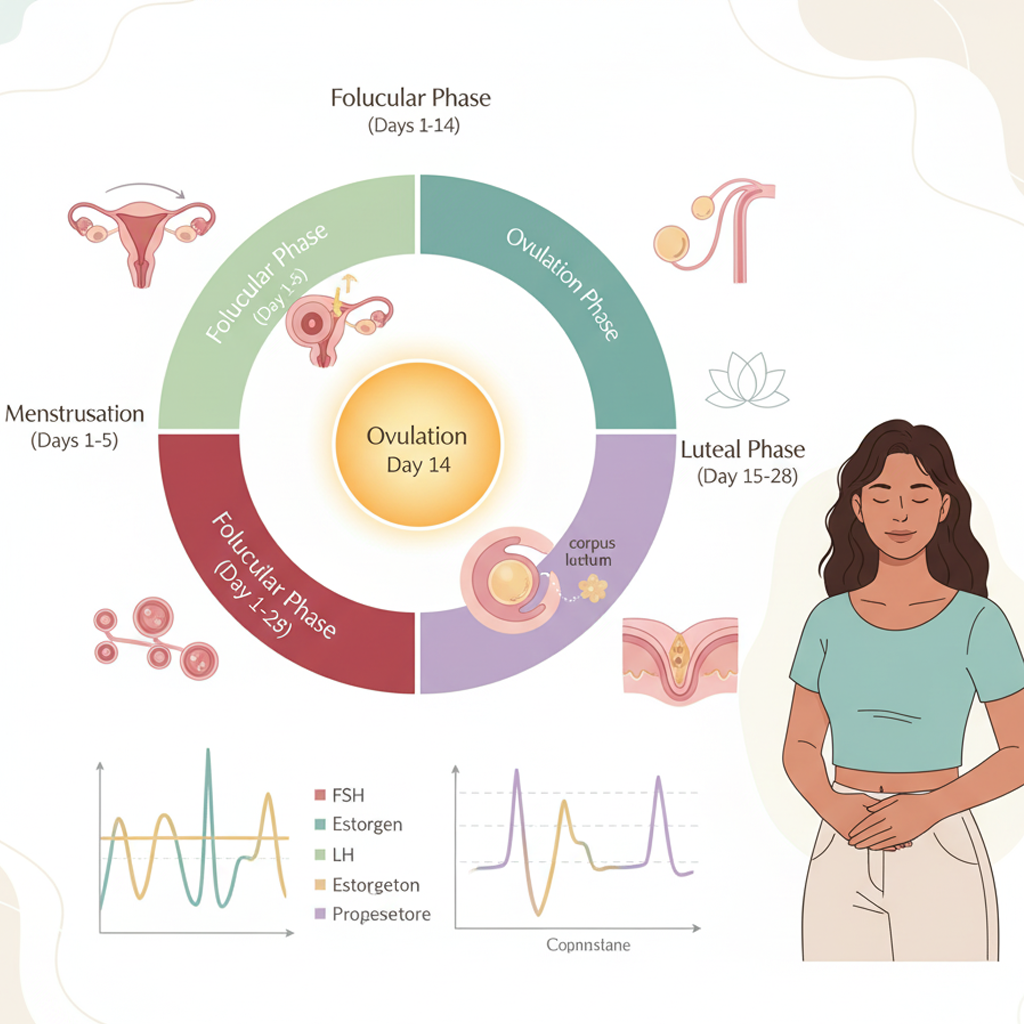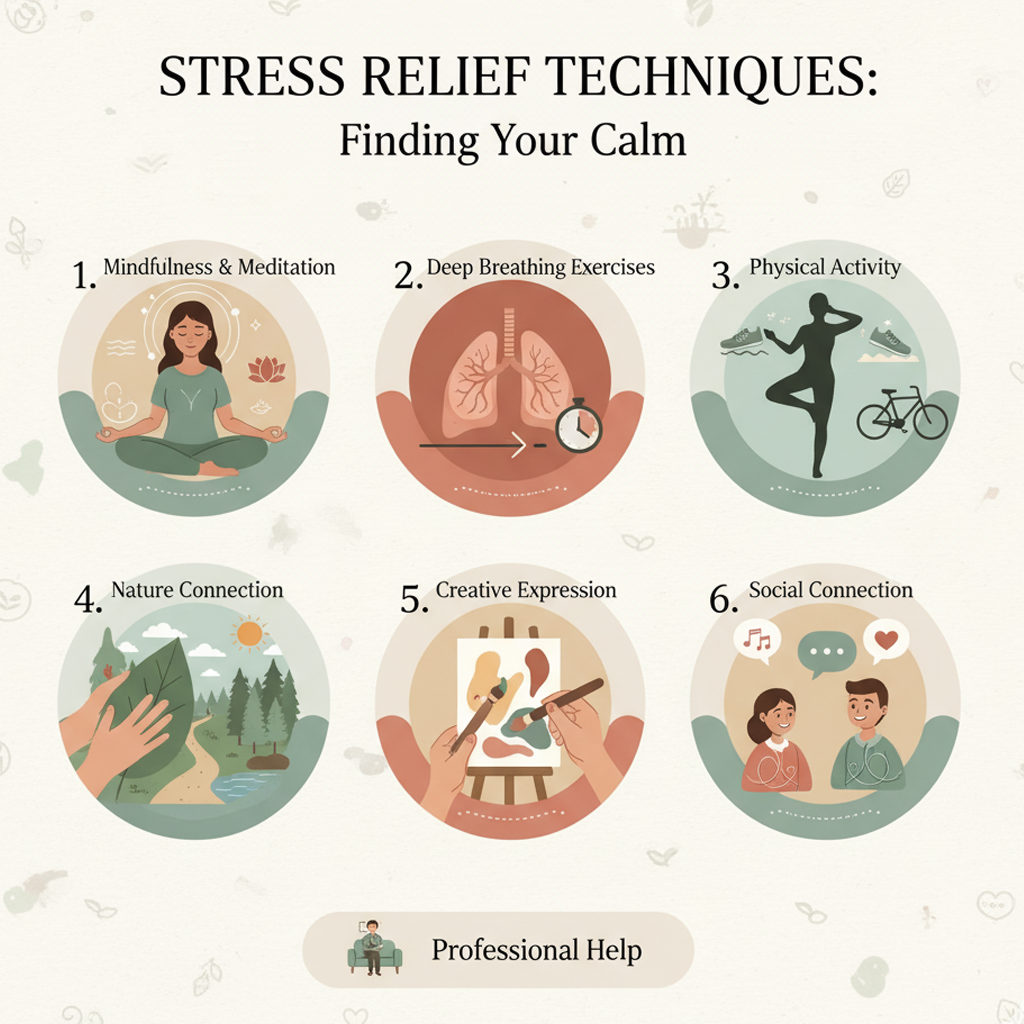Heat Therapy for Cramps

Heat therapy is a safe, effective method to relieve menstrual cramps or mild pregnancy-related pelvic discomfort by relaxing muscles and improving blood flow. This guide provides practical steps for using heat therapy, ensuring comfort and safety during menstruation or pregnancy. Always consult a healthcare provider before using heat therapy, especially during pregnancy, to confirm it’s appropriate for your situation.
1. Understand How Heat Therapy Works
-
Mechanism: Heat relaxes uterine or pelvic muscles, reduces cramping intensity, and increases blood circulation to ease discomfort.
-
Applications: Suitable for menstrual cramps (during the menstrual phase, days 1–5) or mild pregnancy-related cramps (e.g., round ligament pain in the second trimester).
-
Safety Note: Avoid heat therapy for severe or persistent pain, as it may mask underlying conditions requiring medical attention.
-
Purpose: Provides a non-invasive way to manage mild to moderate cramping discomfort.
2. Choose a Heat Therapy Method
-
Heating Pad:
-
Use a reusable cloth-covered heating pad (electric or microwavable) set to low or medium heat (100–120°F or 38–49°C).
-
Place on the lower abdomen or back for 10–20 minutes.
-
-
Warm Water Bottle:
-
Fill a rubber or silicone bottle with warm (not boiling) water (100–110°F or 38–43°C). Wrap in a towel to prevent burns.
-
Apply to the cramping area for 15–20 minutes.
-
-
Warm Bath or Shower:
-
Soak in a warm bath (95–100°F or 35–38°C) for 15–30 minutes, or take a warm shower to relax muscles.
-
-
Homemade Options:
-
Create a DIY heat pack by filling a clean sock with uncooked rice or dry beans, tying it securely, and microwaving for 1–2 minutes (check temperature before use).
-
-
Purpose: Offers flexible, accessible options to suit your comfort and resources.
3. Apply Heat Safely
-
Temperature Control: Ensure the heat source is warm, not hot, to avoid burns. Test on your inner wrist before applying to your abdomen or back.
-
Duration: Limit sessions to 10–20 minutes, with breaks of at least 10 minutes to prevent overheating.
-
Skin Protection: Always place a cloth or towel between the heat source and your skin to reduce burn risk.
-
Pregnancy Precautions:
-
Avoid applying heat directly to the abdomen for prolonged periods during pregnancy, especially in the first trimester, to prevent excessive heat exposure to the fetus.
-
Focus heat on the lower back or sides if cramping is pregnancy-related (e.g., round ligament pain).
-
Consult your healthcare provider before using heat therapy during pregnancy, especially if high-risk (e.g., history of preterm labor).
-
-
Purpose: Ensures safe and effective use of heat therapy to relieve cramps without risks.
4. Track Cramp Patterns and Heat Therapy Effectiveness
-
Action: Use a notebook, calendar, or digital reminder system to log:
-
Timing and severity of cramps (e.g., mild, moderate, severe).
-
Heat therapy sessions (e.g., duration, method, and relief level).
-
Associated symptoms (e.g., heavy flow, fatigue) to identify patterns.
-
-
Tracking Tips:
-
Note cramp triggers (e.g., during menstruation, after activity) and relief outcomes (e.g., “20-min heating pad, cramps reduced from moderate to mild”).
-
Track for 3–6 cycles or throughout pregnancy to assess effectiveness.
-
-
Purpose: Helps evaluate whether heat therapy is sufficient or if medical advice is needed for persistent cramps.
5. Complement Heat Therapy with Other Strategies
-
Hydration: Drink 8–10 cups of water daily to reduce bloating and support muscle relaxation.
-
Gentle Movement: Try light stretching or prenatal yoga (if pregnant) to ease muscle tension. Avoid intense exercise during heavy cramping.
-
Nutrition: Include magnesium-rich foods (e.g., bananas, almonds) and anti-inflammatory foods (e.g., berries, leafy greens) to support muscle health and reduce cramp severity.
-
Stress Management: Practice 5–10 minutes of deep breathing or meditation daily to lower stress, which can worsen cramps.
-
Purpose: Enhances overall cramp relief and supports reproductive or pregnancy health.
6. Know When to Seek Medical Advice
-
Menstrual Cramps:
-
Consult a healthcare provider if cramps are severe, last beyond the first 2–3 days of menstruation, or don’t improve with heat therapy.
-
Seek immediate help for heavy bleeding (soaking a pad/tampon every 1–2 hours) or large clots (bigger than a quarter), which may indicate conditions like endometriosis or fibroids.
-
-
Pregnancy Cramps:
-
Contact your provider immediately for severe or persistent abdominal pain, especially if accompanied by bleeding, reduced fetal movement, or fever.
-
Seek urgent care for signs of preterm labor (e.g., regular contractions before 37 weeks) or other complications like preeclampsia (e.g., sudden swelling, severe headache).
-
-
Purpose: Ensures timely evaluation of underlying issues that heat therapy cannot address.
7. Involve Your Partner or Support System
-
Shared Support: Ask your partner to help prepare heat therapy tools (e.g., warming a water bottle) or create a relaxing environment during cramp episodes.
-
Communication: Discuss cramp patterns and relief outcomes to build mutual awareness, especially if planning or tracking pregnancy.
-
Purpose: Strengthens teamwork and reduces stress during discomfort.
Benefits
-
Pain Relief: Heat therapy reduces cramp intensity by relaxing muscles and improving blood flow.
-
Non-Invasive: Offers a safe, drug-free option for managing mild to moderate cramps.
-
Improved Comfort: Enhances well-being during menstruation or pregnancy, supporting daily activities.
Practical Tips
-
Heat Source Prep: Keep a reusable heating pad or DIY rice pack ready for quick use. Store in a convenient location (e.g., bedside drawer).
-
Application Technique: Apply heat to the lower abdomen for menstrual cramps or lower back for pregnancy-related discomfort. Use a timer to limit sessions to 20 minutes.
-
Tracking Tools: Log cramps and heat therapy outcomes in a simple journal (e.g., “Day 1: moderate cramps, 15-min warm bath, relief for 2 hours”). Include symptom details for provider discussions.
-
Comfort Aids: Use a soft blanket or pillow to support your body while applying heat, especially during pregnancy.
-
Dietary Support: Pair heat therapy with anti-inflammatory snacks (e.g., a handful of walnuts or a smoothie with berries) to enhance relief.
-
Safety Check: Always test heat sources on your skin and avoid falling asleep with a heating pad to prevent burns.
Actionable Next Steps
-
Today: Prepare a heat therapy tool (e.g., warm water bottle or DIY rice pack) and choose a tracking tool to log cramps and relief outcomes.
-
This Week: Test heat therapy during your next cramp episode, noting duration and effectiveness in your log.
-
Ongoing: Track cramp patterns over 3–6 cycles or throughout pregnancy. Consult a healthcare provider if cramps are severe, persistent, or accompanied by warning signs.
Related Articles

Cycle Phase Overview

Stress Relief Techniques

Week 1 - Early Pregnancy

Week 18 - Hearing Develops

Pregnancy Nap Tips

Week 32 - Nail Growth

Symptom Alert System

Week 21 - Eyebrows Form